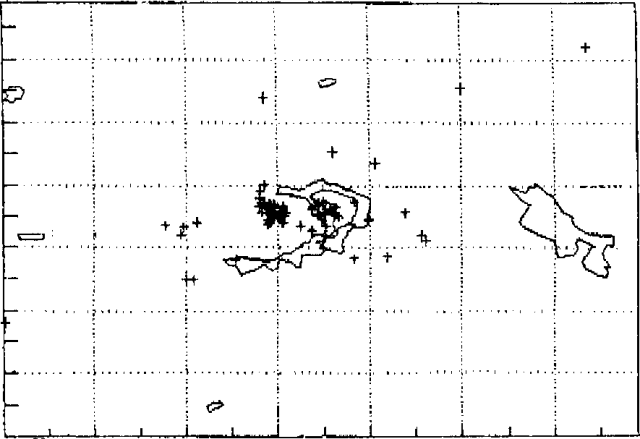Report on Galeras (Colombia) — January 1990
Bulletin of the Global Volcanism Network, vol. 15, no. 1 (January 1990)
Managing Editor: Lindsay McClelland.
Galeras (Colombia) Ash emission and increased seismicity; earthquake swarm 3-5 km W of the crater
Please cite this report as:
Global Volcanism Program, 1990. Report on Galeras (Colombia) (McClelland, L., ed.). Bulletin of the Global Volcanism Network, 15:1. Smithsonian Institution. https://doi.org/10.5479/si.GVP.BGVN199001-351080
Galeras
Colombia
1.22°N, 77.37°W; summit elev. 4276 m
All times are local (unless otherwise noted)
The number of high- and low-frequency earthquakes increased in January (see figure 18). Pulses of spasmodic tremor accompanied ash emission on the 7th. A swarm of high-frequency events occurred W of the crater at depths of 3-5 km on the 10th (figure 14). The electronic tiltmeter showed an increase of 3 µrad on 26 January, coinciding with an M 2 earthquake beneath the tiltmeter station. Gas emission was not measured in January.
Geological Summary. Galeras, a stratovolcano with a large breached caldera located immediately west of the city of Pasto, is one of Colombia's most frequently active volcanoes. The dominantly andesitic complex has been active for more than 1 million years, and two major caldera collapse eruptions took place during the late Pleistocene. Long-term extensive hydrothermal alteration has contributed to large-scale edifice collapse on at least three occasions, producing debris avalanches that swept to the west and left a large open caldera inside which the modern cone has been constructed. Major explosive eruptions since the mid-Holocene have produced widespread tephra deposits and pyroclastic flows that swept all but the southern flanks. A central cone slightly lower than the caldera rim has been the site of numerous small-to-moderate eruptions since the time of the Spanish conquistadors.
Information Contacts: INGEOMINAS, Pasto; INGEOMINAS, Manizales.


